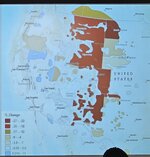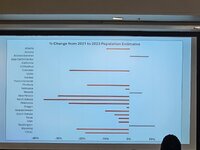406life
Lil-Rokslider
The 30th Pronghorn Workshop was this past week and highlighted some great research being done on the species. It also showed some very real concerns about their declining numbers. Virtually every state is reporting dropping numbers, some very quickly. The hardest hit areas are the core states and ranges. Disease and environment are definitely having an impact but in many places they simply don't know why the numbers are declining. Road avoidance studies are showing stark segregation of herds, which might be leading to loss of collective migration knowledge and genetic diversity. Another study shows that there may be susceptibility of pronghorn to contract CWD, sharing 6 of 6 of the alleles that make WT susceptible.


All this makes me very concerned about our current conservation of antelope. They can bounce back with a few good years, but they aren't showing that response, especially in Montana. Beyond the winter kill in WY 2022, there is significant pressure on a species that generally is last on priority sheets (heck, I wonder if sage grouse work is probably benefiting pronghorn more than pronghorn work).
The proceedings of the workshop will be published this summer, if anyone's interested in reading more. Maybe it's time for pronghorn enthusiasts to form the North American Pronghorn Foundation or something.


All this makes me very concerned about our current conservation of antelope. They can bounce back with a few good years, but they aren't showing that response, especially in Montana. Beyond the winter kill in WY 2022, there is significant pressure on a species that generally is last on priority sheets (heck, I wonder if sage grouse work is probably benefiting pronghorn more than pronghorn work).
The proceedings of the workshop will be published this summer, if anyone's interested in reading more. Maybe it's time for pronghorn enthusiasts to form the North American Pronghorn Foundation or something.
